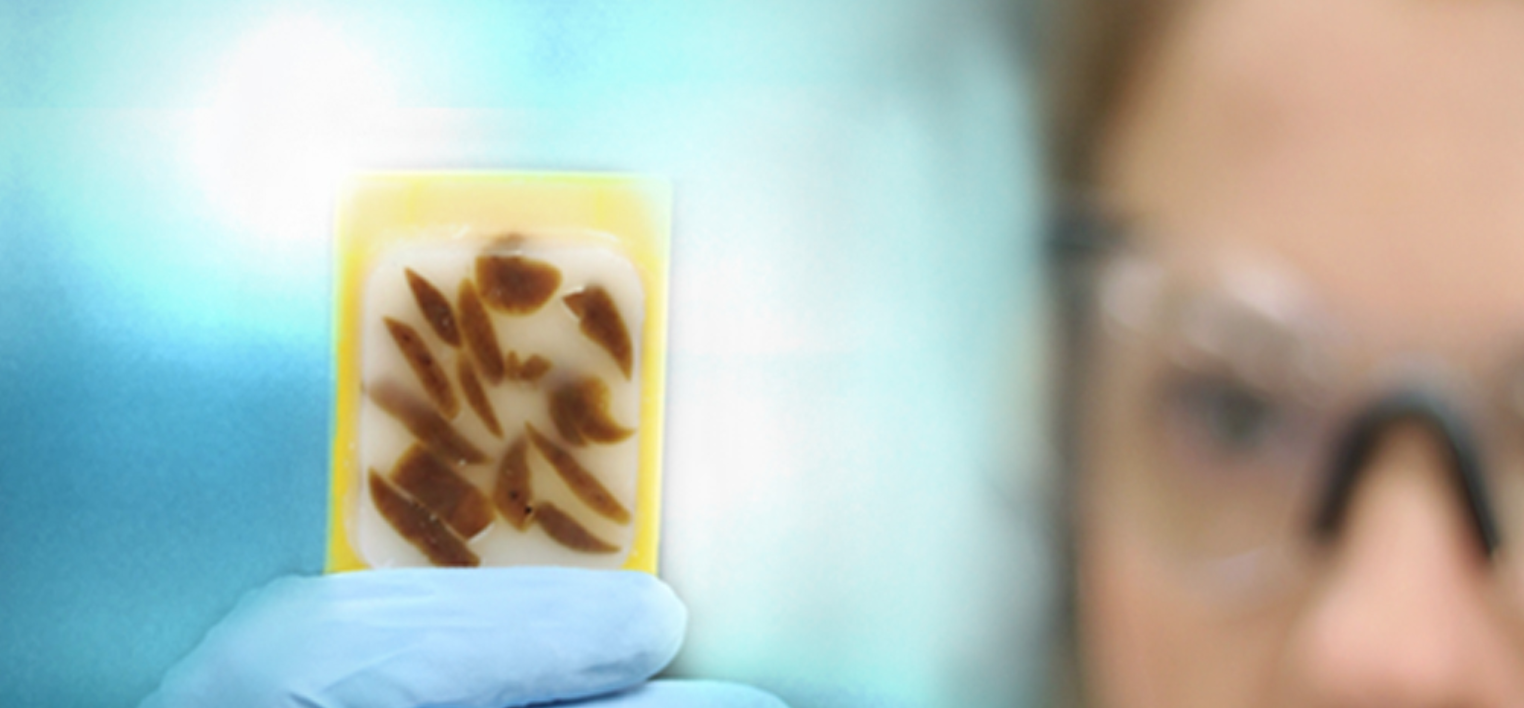Introduction
Formalin-fixed paraffin embedded (FFPE) is a method used globally for the preservation of tissue. However, the steps for FFPE has not been standardized. One particular study found 15 preanalytical factors for the processing of FFPE tissue that affects the efficacy of immunohistochemistry. The different processing regimens, extraction techniques, patient-related factors, antigen retrieval techniques, and other preanalytical variables have led to varying levels of success with the molecular analysis of these biospecimens.
Acceptable Conditions of FFPE for DNA Analysis
1. Prefixation:
Current literature has found that there are several factors that can affect the DNA analysis of FFPE specimens. It includes:
• Cold ischemia – the time between removal of biospecimen from host and preservation. The DNA extracted from biospecimens that has a cold ischemia time of 1 hour was found to have reduced fluorescent in situ hybridization (FISH) signals. However, a cold ischemia time of 24 hours was not observed to have altered polymerase chain reaction (PCR) amplification success rates.
• Postmortem interval (PMI) – the time elapsed since the death of the donor. A PMI of 48 hours was also found to reduce FISH signals when compared to a PMI of 1 hour. However, PCR remained unaffected despite a PMI of 4 to 8 days.
• Decalcification method – multiple reports showed that decalcification using ethylenediaminetetraacetic acid (EDTA) was better than acid-based methods as it allows superior determination of gain and loss of sequences for comparative genomic hybridization, amplification of longer PCR products, stronger FISH signals, and reduced background staining. When acid-based methods were compared, decalcification using 5% formic acid for 12 to 18 hours resulted in FISH signals while the signal was abolished when decalcification was performed using a 10% formic acid solution for 7 to 10 days.
• Specimen size – researchers have found that PCR success rates were highest when DNA extraction was performed on specimens ranging from 3 to 10mm in diameter compared to other smaller or larger specimens.
2. Fixation:
Some preanalytical factors that involve the fixation of the biospecimen have also been reported. These factors include:
• Time of fixation – most agree that fixation of fewer than 72 hours in formalin was superior compared to longer durations as it improved yield, DNA integrity, PCR, in situ hybridization (ISH), and single nucleotide polymorphism detection assay performance. However, long term fixation has no consequence on DNA yield, success rates for PCR amplification of nuclear DNA, or mitochondrial and viral DNA amplification.
• Temperature of fixation – studies have found that fixation performed at ambient temperatures or higher led to reductions in DNA integrity and yield. PCR success also drops at elevated temperatures. However, it is still unclear if fixation should be performed at 4⁰C or ambient temperatures as fixation at 4⁰C increases PCR success and high molecular weight DNA yield while fixation at ambient temperature increases the efficiency of amplification.
• Buffered or unbuffered formalin – current literature concluded that DNA that was extracted from neutral buffered formalin biospecimens led to greater yields and higher success rates for in situ hybridization (ISH) and genotype determination. PCR success rates were unclear if it was equivalent or superior for neutral buffered formalin biospecimens when compared to unbuffered formalin.
• Formalin penetration of tissue expedited by ultrasound or microwave irradiation – there is little information available regarding the impact of acceleration methods on DNA. However, some evidence suggests that both microwave or ultrasound accelerated fixation may improve PCR success rates and high molecular weight DNA yield from FFPE tissue.
3. Processing and Storage:
Some factors that may influence DNA endpoints have not been addressed. Evidence is limited to one study that highlighted the importance of using a paraffin mixture with beeswax versus pure paraffin. These include:
• Dehydration
• Clearing
• Paraffin reagents
Many studies have reported the benefit of paraffin blocks where it can be stored for many years at room temperature with only minor effects on DNA analysis. However, there are also other studies that show the decrease of amplifiable DNA length and whole genome amplified fragments despite using optimized DNA extraction procedures. One study that investigated the effect of storage duration of FFPE sections on downstream DNA analysis found that storage of FFPE sections for 10 years was detrimental to PCR success rates. Literature has also suggested that various paraffin block sizes or even fractions of a standard 5μm section can be successfully analyzed, better PCR success rates and higher yields from DNA extraction were obtained from FFPE sections. More intense FISH signals were also obtained from analysis of sections compared to isolated nuclei.
Conclusion
Based on current literature, when FFPE specimens will be used for DNA analysis, cold ischemia times and PMI should be limited to 1 hour and 48 hours respectively. FFPE biospecimens should range from 3 to 10mm3, use EDTA for decalcification, fixation in neutral buffered formalin for less than 72 hours at 4⁰C or ambient temperature, and embedded in pure paraffin. There is also some evidence that suggests ultrasound or microwave accelerated fixed specimens are suitable for DNA analysis. Although FFPE blocks can be stored at room temperature for many years, it is important for professionals to note that amplifiable gene fragment length may decrease with time. Therefore, the extraction of DNA from FFPE sections, isolated nuclei, or cores that have been stored for more than 10 years should be avoided.
References:
1. Bass BP, Engel KB, Greytak SR, Moore HM. A review of preanalytical factors affecting molecular, protein, and morphological analysis of formalin-fixed paraffin-embedded (FFPE) tissue: how well do you know your FFPE specimen? Archives of Pathology & Laboratory Medicine. 2014; 138(11): 1520-1530. Accessed 2/24/2019. https://www.archivesofpathology.org/doi/full/10.5858/arpa.2013-0691-RA
2. TP Lau. Assessment of telomere length in archived formalin fixed paraffinized human tissue is confounded by chronological age and storage duration. PLoS One. 2016; 11(9): p.e0161720.


